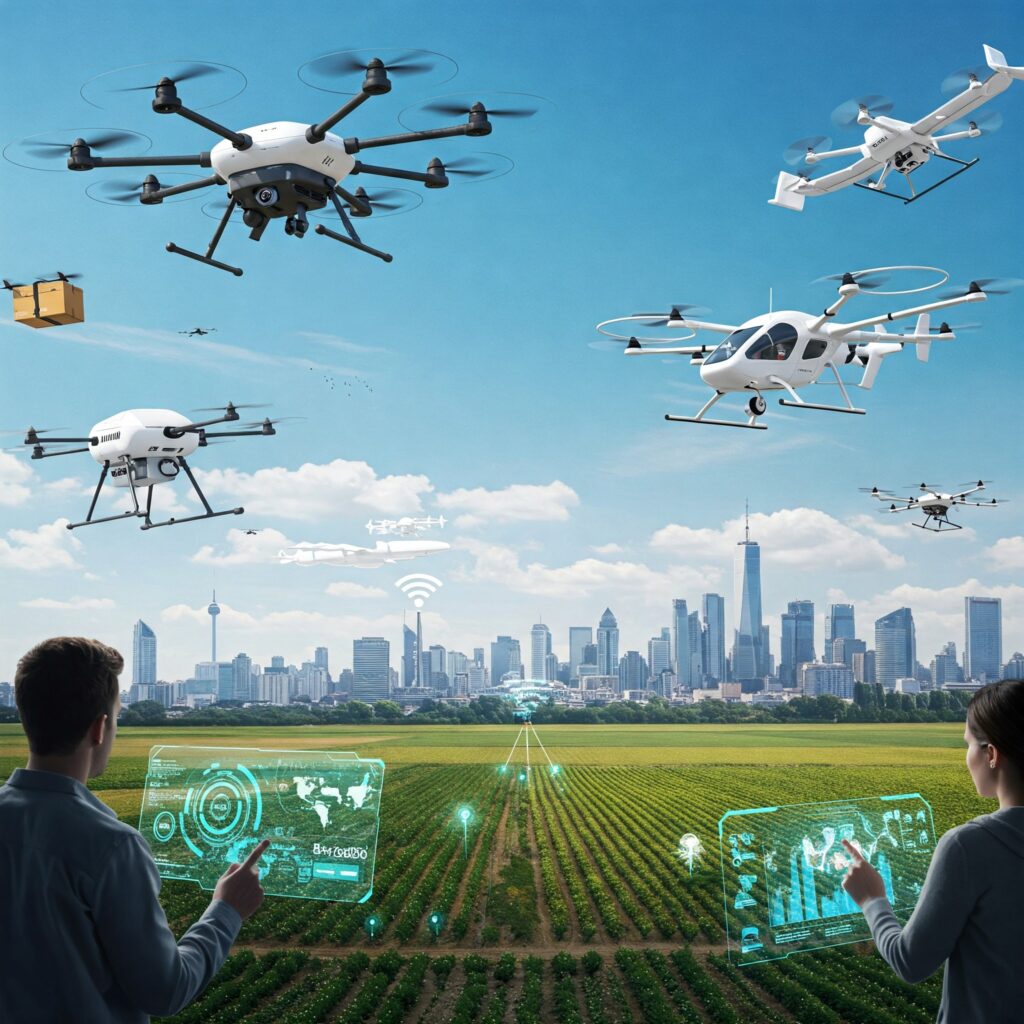What is Autonomous Flight Technology?
Autonomous flight technology refers to the development of aircraft systems capable of navigating and performing flight operations without human intervention. Utilizing advanced sensors, AI algorithms, and real-time data analysis, autonomous drones and aircraft can make decisions, avoid obstacles, and complete complex missions independently. This groundbreaking innovation is revolutionizing the aerospace industry and shaping the future of transportation and logistics.
Introduction
From delivery drones to autonomous passenger aircraft, the future of aviation is rapidly shifting toward automation. Companies like Boeing, Airbus, and startups such as Xwing and Wisk Aero are at the forefront of developing fully autonomous flight systems. These technologies promise to enhance safety, reduce operational costs, and improve efficiency in both commercial and military aviation. As AI, robotics, and connectivity evolve, the skies are becoming smarter and more autonomous.
Key Innovations in Autonomous Flight

Advancements in autonomous flight are made possible through the integration of various cutting-edge technologies:
1. AI-Powered Flight Control Systems
- Machine learning enables aircraft to learn from past flights and improve performance.
- AI can interpret sensor data to make real-time flight decisions.
- Autopilot systems are evolving into fully autonomous navigation platforms.
2. Enhanced Navigation and Obstacle Avoidance
- GPS, LiDAR, radar, and computer vision allow for precise navigation and terrain mapping.
- Real-time obstacle detection prevents collisions and enhances safety.
- Systems adapt to weather conditions and dynamic environments.
3. Communication and Data Link Integration
- Advanced communication systems enable continuous data exchange with ground control.
- Remote monitoring and control enhance mission oversight.
- Redundant systems ensure reliability and fail-safe operations.
Applications of Autonomous Flight Technology
Autonomous flight is not just about replacing pilots—it opens doors to new use cases across various industries:
1. Urban Air Mobility (UAM)
- Autonomous air taxis and eVTOLs (electric vertical takeoff and landing vehicles) offer efficient urban transport.
- Reduces traffic congestion and travel time in metropolitan areas.
2. Logistics and Delivery
- Drones are transforming last-mile delivery for packages, medical supplies, and food.
- Enables rapid deployment in remote or disaster-struck areas.
3. Military and Defense
- Autonomous drones support surveillance, reconnaissance, and combat missions.
- Reduces human risk and enhances mission effectiveness.
4. Agricultural and Environmental Monitoring
- Drones monitor crop health, irrigation, and land conditions.
- Autonomous systems assist in wildlife tracking and conservation.
Challenges and Considerations
Despite its potential, autonomous flight technology faces several hurdles:
- Regulatory Compliance: Governments must establish clear airspace regulations.
- Cybersecurity Risks: Protecting flight systems from hacking is crucial.
- Public Trust: Gaining passenger and societal acceptance takes time.
- Technological Maturity: Some systems still require human oversight.
Conclusion
The future of flight is autonomous. With continuous advancements in AI, sensor technology, and connectivity, autonomous aircraft are becoming more reliable and capable. From improving logistics to transforming urban travel, autonomous flight technology is set to revolutionize how we navigate the skies. While challenges remain, the horizon looks promising as we take flight into a smarter, safer, and more efficient aerial future.
